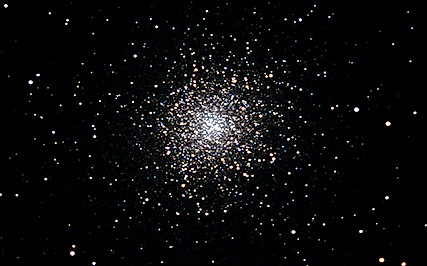
Posted on 09/26/2024 12:54:23 PM PDT by MtnClimber
Explanation: In 1716, English astronomer Edmond Halley noted, "This is but a little Patch, but it shows itself to the naked Eye, when the Sky is serene and the Moon absent." Of course, M13 is now less modestly recognized as the Great Globular Cluster in Hercules, one of the brightest globular star clusters in the northern sky. Sharp telescopic views like this one reveal the spectacular cluster's hundreds of thousands of stars. At a distance of 25,000 light-years, the cluster stars crowd into a region 150 light-years in diameter. Approaching the cluster core, upwards of 100 stars could be contained in a cube just 3 light-years on a side. For comparison, the closest star to the Sun is over 4 light-years away. The deep, wide-field image also reveals distant background galaxies including NGC 6207 at the upper left, and faint, foreground Milky Way dust clouds known to some as integrated flux nebulae.
For more detail go to the link and click on the image for a high definition image. You can then move the magnifying glass cursor then click to zoom in and click again to zoom out. When zoomed in you can scan by moving the side bars on the bottom and right side of the image.

🪐 🌟 🌌 🍔
Wow - that was unexpected
I love these arguments
M13 has a chain of stars at the central area which resembles an X. This is my shot of M13 which clearly depict an X at the central core area.

An no, that is not spilled milk on my floor.
OK, no prob!
Harris Walz: The Great Globular Cluster
NICE!👍
And look at that pretty little triple at 7 O’Clock and about 2/3 of the way out.
Don’t know if it’s really a triple or a double with an extra star in the field of view.

"Iolaus, go find me a doctor and keep it on the down low."
Disclaimer: Opinions posted on Free Republic are those of the individual posters and do not necessarily represent the opinion of Free Republic or its management. All materials posted herein are protected by copyright law and the exemption for fair use of copyrighted works.